Exploring Cartoons for Five-Year-Olds: Benefits and Choices
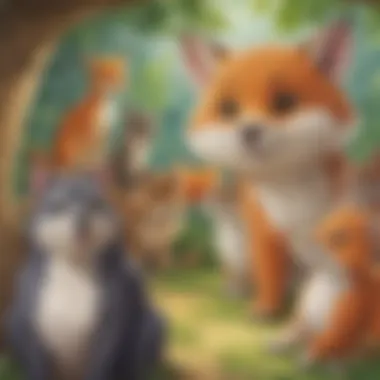

Intro
Cartoons play a pivotal role in the lives of five-year-olds. At this age, children are curious and eager to learn about the world around them. Cartoons serve not only as entertainment but also as tools that can aid cognitive and social development. They stimulate imagination, improve language skills, and help in understanding social interactions.
Parents and educators face the challenge of selecting appropriate content. With countless options available, it is essential to evaluate cartoons based on their potential educational value. This article will explore various aspects of cartoons for young children, emphasizing their benefits, providing recommended titles, and examining how they can enrich a child's learning experience.
Creative Activities
Creative activities can significantly enhance the impact of cartoons on a child's development. Engaging in hands-on projects allows children to process the information they receive from animated shows in a more tangible manner.
Craft Ideas
Here are some simple craft ideas inspired by popular cartoons:
- Character Puppets: Create puppets using socks or paper bags based on favorite cartoon characters. This helps children express creativity and develop fine motor skills.
- Storybooks: Encourage kids to illustrate their own storybooks inspired by cartoon scripts. They can create original plots or retell favorite episodes.
- Drawing: Provide coloring sheets of characters and scenes. This allows kids to explore color choices and practice their drawing skills.
Step-by-Step Guides
When crafting, having clear instructions is important. Here are easy steps for making character puppets:
- Gather materials such as socks, googly eyes, and glue.
- Decorate the sock with the eyes, fabric scraps, and markers to represent the character.
- Use your hand to move the puppet and create a short dialogue based on a cartoon episode.
Educational Value
These activities not only encourage creativity but also enhance a child's ability to comprehend storytelling. By recreating scenes or characters from cartoons, children practice narrative skills and learn the basics of character development.
Fun Quizzes
Adding an interactive component like quizzes can reinforce what children learn from cartoons. Quizzes can help solidify knowledge while keeping the learning process enjoyable.
Quiz Topics
On platforms like ElemFun, quiz topics include:
- Recap of cartoon episodes.
- Facts about characters.
- Educational themes presented in the cartoons.
Question Types
Using various question types keeps children engaged. These may include:
- Multiple-choice questions.
- Fill-in-the-blank questions.
- True or false statements.
Knowledge Reinforcement
Quizzes serve as an effective tool for reinforcing learning. They encourage children to recall information from the cartoons and apply it, setting a foundation for critical thinking.
Fact-Based Articles
Accompanying the engaging nature of cartoons, fact-based articles can provide children with in-depth knowledge about their favorite subjects.
Topics
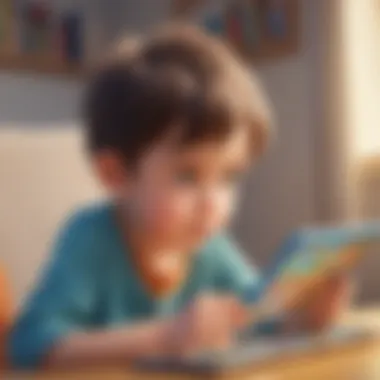

The articles can cover a wide variety of topics pertinent to what they watch:
- Science topics introduced in cartoons.
- Historical events depicted through animated films.
- Cultural explorations featured in various series.
Engaging Content
The best articles present facts in a manner that is accessible and easy to understand for young readers. Clear language and relatable examples can turn complex information into digestible content.
Understanding Cartoons and Child Development
Cartoons play a significant role in the development of five-year-old children. At this age, children are impressionable and highly responsive to visual stimuli. Cartoons provide them with not just entertainment but also a platform for learning. Understanding how visual media shapes their cognitive, social, and emotional skills is crucial for parents and educators.
The starting point in this exploration is to recognize that children learn differently at various stages of their development. The right cartoons can help foster creativity, enhance their ability to think critically, and promote emotional intelligence. In this section, we will delve into two key components: the role of visual media and the developmental milestones typical for five-year-olds.
The Role of Visual Media
Visual media, especially cartoons, has transformed how children consume information. For five-year-olds, colorful animations and engaging characters can capture attention in ways that traditional storytelling might not. This visual engagement is critical; it supports various learning styles, particularly for visual learners.
Moreover, research shows that animated content can simplify complex subjects. For instance, subjects like mathematics can be presented in visually appealing formats that highlight key concepts through stories and characters. Additionally, cartoons can introduce children to diverse cultures and experiences, thereby broadening their understanding of the world.
Cartoons serve as a modern form of storytelling, shaping young minds by integrating fun with essential lessons.
Developmental Milestones at Age Five
At age five, children experience several developmental milestones that are essential to their growth. They typically develop better language skills, improved motor coordination, and an increased ability to express emotions.
Key milestones include:
- Language Development: Children start to use complex sentences and understand new vocabulary. Cartoons can help reinforce this with dialogue that models language use.
- Social Skills: Interaction with cartoon characters can teach social norms and empathy. Children learn about sharing, teamwork, and conflict resolution from relatable stories.
- Cognitive Skills: They begin to understand cause and effect, which many cartoons illustrate effectively through plotlines. This cognitive development is crucial as it sets the foundation for problem-solving skills.
Overall, comprehending how cartoons relate to child development allows parents and caregivers to make informed decisions about what their children watch. Prioritizing appropriate content can lead to rich learning experiences that engage young viewers in meaningful ways.
Choosing Appropriates Cartoons
The task of choosing cartoons requires careful deliberation, as the animated content children consume can influence their cognitive and social skills. Cartoons can serve as both entertainment and a medium for education. Therefore, it is essential to select titles that are engaging yet age-appropriate and educational.
Criteria for Selection
When selecting cartoons for young viewers, several factors should be considered:
- Age Appropriateness: It's crucial to choose shows that align with the child's developmental stage. Cartoons should not only entertain but also promote understanding of concepts and morals relevant to their age.
- Content Quality: Review the themes presented in the cartoons. Content should promote positive values and discourage negative behavior. Shows that encourage teamwork and sharing are especially beneficial.
- Engagement Level: The best cartoons captivate children’s attention. Observe how your child reacts to various shows. Shows that inspire curiosity or a desire for learning will add more value.
- Diversity: Look for cartoons featuring diverse characters and cultures. Exposure to various perspectives can help children understand and appreciate differences in the world.
Taking the time to understand these criteria ensures that the chosen animated shows contribute positively to a child's development.
The Balance Between Entertainment and Education
Striking a balance between entertainment and education is paramount. Cartoons should be enjoyable for kids; otherwise, they will lose interest quickly. However, educational value is equally important. Parents and caregivers should aim for content that fosters learning while being entertaining.
Consider cartoons that integrate educational lessons seamlessly into the narrative. For instance, programs like Sesame Street and Bluey make learning fun and approachable. They incorporate songs, poems, and interactive storytelling to enhance retention of lessons.
Additionally, think about content that encourages critical thinking. Shows that incorporate problem-solving or creative brainstorming can be more effective than those focusing solely on passive entertainment. Promoting interaction, whether through questions or activities, supports engagement and retention.
Popular Cartoon Titles for Five-Year-Olds
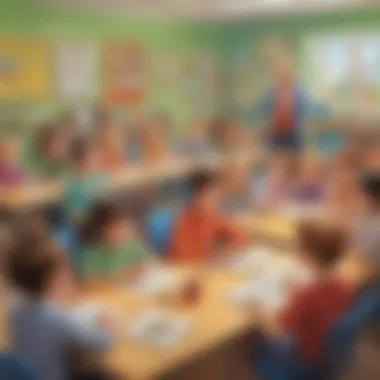

Exploring Educational Cartoons
Educational cartoons are designed specifically to engage young minds. Programs like Sesame Street and Dora the Explorer offer a mixture of fun and learning, making them essential for cognitive growth. They present complex ideas in a simple format, using animation, music, and storytelling.
- Key educational elements include:
- Vocabulary building: Characters often use diverse language, helping kids pick up new words.
- Problem-solving skills: Many episodes include puzzles or challenges that require critical thinking.
- Social interactions: These shows often portray friendship and cooperation, crucial concepts for five-year-olds.
Using educational cartoons effectively can enrich a child's understanding of various subjects, from math to science to social studies. They can promote curiosity and encourage children to ask questions.
Entertaining yet Informative Shows
Not all cartoons need to be strictly educational to provide value. Entertaining yet informative shows like Peppa Pig or Curious George offer engaging stories while also teaching lessons about daily life. These shows often present relatable scenarios, allowing children to learn social cues and explore real-world situations.
- Benefits of these shows include:
- Imagination and creativity: These programs stimulate creative thinking through imaginative storylines.
- Life skills: They can teach children about responsibility, sharing, and understanding emotions.
- Cultural awareness: Many cartoons introduce diverse characters and settings, fostering acceptance and understanding of different cultures.
Overall, popular cartoon titles for five-year-olds should strike a balance between entertainment and learning. Parents should carefully select programs that align with educational goals while still capturing their child's interest.
The Impact of Cartoons on Learning
Cartoons play a significant role in the learning journey of five-year-olds. At this age, children are naturally curious and absorb information rapidly. Visual media, particularly animated content, provides an engaging platform that captures children's attention and facilitates learning. The combination of vibrant colors, relatable characters, and simple narratives creates an environment where children feel safe to explore concepts.
Cognitive Development Through Animation
Animation is not just entertaining; it is also a powerful tool for cognitive development. Through cartoons, children are exposed to various problem-solving scenarios that require them to think critically. For example, characters often face challenges that they must overcome, encouraging viewers to consider different solutions.
- Problem Solving: When a character encounters a problem, children learn to analyze the situation and think through possible outcomes, enhancing their critical thinking skills.
- Memory Enhancement: Repetitive themes and storylines in cartoons help strengthen memory. Children start recognizing patterns and understanding sequences, which are crucial for cognitive growth.
"Animated content stimulates children's imagination and enhances their ability to process information in a fun way."
Enhancing Language Skills with Cartoons
Cartoons can also significantly enhance language skills. Young children are in a stage of rapid vocabulary development, and animated shows provide a rich source of words and phrases.
- Vocabulary Expansion: Many cartoons introduce new words in context, making it easier for children to understand and remember. For instance, characters may describe their feelings or share facts about nature clearly and simply.
- Listening Comprehension: By following dialogues in cartoons, children improve their ability to retain information and understand spoken language. This practice helps lay the groundwork for effective communication skills later in life.
Social and Emotional Learning
Social and emotional learning is another vital aspect influenced by cartoon viewing. As children engage with characters, they often observe interactions that reflect real-life social dynamics.
- Empathy Development: Cartoons frequently portray characters dealing with emotions like sadness, joy, and anger. This exposure helps children learn about feelings, aiding them in developing empathy towards others.
- Social Skills: By watching how characters solve conflicts and build friendships, children learn essential social skills. They see the importance of cooperation, sharing, and understanding different perspectives, which are critical for their social interactions.
Risk Factors Associated with Cartoon Viewing
Understanding the risk factors related to cartoon viewing is crucial for parents and caregivers. While cartoons can offer educational content, some factors require attention. These factors help ensure children benefit from what they watch. Addressing these aspects can lead to better decision-making about media consumption for young audiences.
Content Appropriateness
- Check the Message: Cartoons may teach children lessons about friendship, sharing, or kindness. Positive messages foster good behavior. Neglecting to select age-appropriate content may expose children to themes that encourage violence or negative interactions.
- Age Ratings: Look for shows that are specifically rated for preschool or kindergarten age. This can guide decisions about what is suitable. Familiarizing oneself with organizations that provide content ratings, like the TV Parental Guidelines, can be very helpful.
- Diversity in Characters: It is also essential to view the representation in cartoons. Shows that include diverse characters promote understanding and acceptance of differences, which is a positive influence.
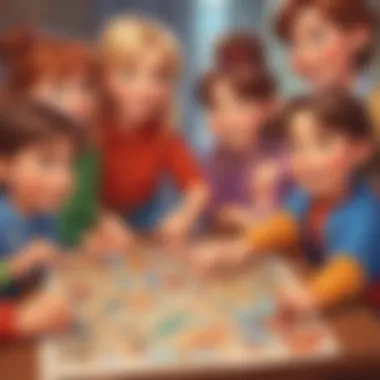
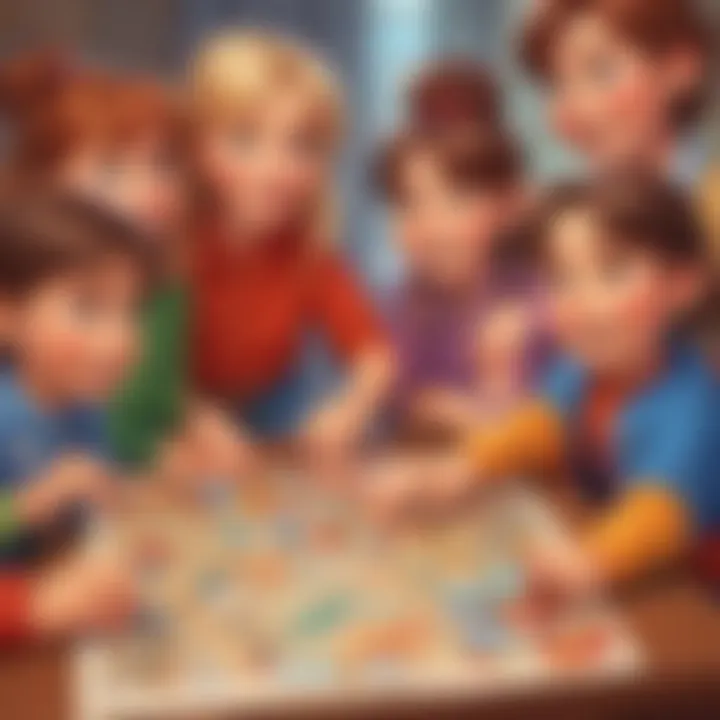
"Selecting cartoons with positive themes can help shape a child's understanding of social interactions and moral values."
In summary, ensuring the appropriateness of cartoon content involves attention to themes, age ratings, and diversity. Thoughtful selection can support a child's development in a constructive manner.
Screen Time and Its Effects
Screen time remains a topic of interest when discussing cartoon viewing habits. Recommendations from health organizations suggest limits on daily screen time for young children. Understanding the potential effects of screen time on a child's well-being is critical.
- Daily Limits: The American Academy of Pediatrics recommends no more than one hour of media exposure for children aged two to five. This guideline aims to ensure that children interact with others and engage in physical activities for holistic development.
- Physical Effects: Prolonged screen time can lead to sedentary behavior. This may result in health issues such as obesity. Encouraging interactive activities, rather than just viewing, can balance this issue.
- Emotional and Social Impacts: Excessive screen time often affects social skills. Children who spend too much time watching cartoons may miss out on valuable face-to-face interactions with peers and family members. This lack of interaction could hinder the development of essential social skills.
Monitoring screen time and integrating balance is vital. By establishing healthy viewing habits, parents can create an environment where children enjoy cartoons and engage in other meaningful activities.
Incorporating Cartoons into Daily Learning
Incorporating cartoons into daily learning is not just about entertainment. It provides a unique opportunity to engage children and relate complex ideas in a way they can grasp. For five-year-olds, who are naturally curious and in the crucial stages of cognitive and emotional development, cartoons can be effective educational tools.
By integrating animated content related to their learning materials, children can reinforce what they have seen and heard in school. They can see practical examples of concepts explored in their narrative. This strategy not only solidifies knowledge but also adds an element of enjoyment to schooling, making it less of a chore and more of a delightful experience. Each cartoon can present stories that illustrate important themes, morals, or scientific processes, thus offering both educational and entertainment value.
Moreover, considering the visual nature of learning for young children, cartoons can help bridge gaps in understanding. As their attentions spans are short, the quick pacing and engaging visuals of cartoons can capture their interest better than traditional methods.
Engaging educational cartoons can transform passive viewing into active learning experiences.
However, it is crucial to ensure these cartoons are aligned with the educational goals set for children. Selecting appropriate content will enhance learning without overwhelming the child with too much information at once.
Using Cartoons to Reinforce Lessons
Cartoons serve as excellent reinforcement tools for lessons children encounter in school. For instance, if a child is learning about numbers, educational cartoons that incorporate counting can help that child to practice what they have learned. Characters who count objects or solve mathematical problems will demonstrate practical applications of those concepts.
These animated sequences can instill confidence in a child’s ability to learn. When children see peers represented in cartoons engaged in similar learning experiences, they may feel motivated to try out those skills themselves. Many educational cartoons, such as Sesame Street, weave in lessons ranging from counting to the alphabet within fun storylines, enhancing comprehension and retention of information.
Furthermore, children often repeat phrases or actions they observe in cartoons. This repetition reinforces learning as they imitate and practice skills modeled by their favorite characters.
Engaging Activities Related to Cartoons
Engaging activities related to the cartoons watched can further enhance learning. After a cartoon episode, parents or educators can encourage discussions about the story or the characters. Asking questions like "What did the main character learn?" or “How did they solve their problem?” facilitates critical thinking.
Activities can include:
- Drawing: Children can draw their favorite scenes from the cartoon, which allows for creative expression while reflecting on what they’ve watched.
- Role-playing: Young learners could reenact scenes, exploring character motivations and actions, fostering skills in empathy and understanding.
- Crafts: Engaging in crafts related to cartoon themes can make the connection more tangible. For example, if the cartoon featured underwater adventures, children could create ocean-themed art pieces.
Incorporating these activities allows children to explore concepts in a hands-on manner. In this blend of watching and doing, learning becomes a well-rounded experience that caters to various learning styles.
In summary, by thoughtfully incorporating cartoons into daily learning, we can foster a rich educational environment where lessons come to life, making knowledge enjoyable and accessible.
The End: The Value of Cartoons in Early Education
Summary of Key Points
In reviewing the main topics discussed, we find that:
- Visual Media Influence: Cartoons play an essential role in exposing children to new concepts and ideas.
- Developmental Benefits: They are linked to cognitive, social, and emotional learning milestones, crucial during early growth.
- Educational Content: Shows designed with educational themes can enhance language skills, critical thinking, and problem-solving abilities.
- Practical Application: Parents can utilize cartoons to reinforce academic lessons and engage children in thematic activities, therefore serving as an extension of daily learning.
- Cautions with Consumption: Understanding the balance of content appropriateness and screen time is essential to protect children from potential negative effects.
Overall, it is clear that the right cartoons can offer a blend of entertainment and education, enabling young viewers to grasp complex ideas while also fostering social interaction.
Future Perspectives on Animation in Learning
As technology advances, the landscape of children's programming is expanding. Future developments in animation and interactivity could reshape how cartoons are integrated into educational frameworks. A few potential trends include:
- Increased Interactivity: Children may engage with content not just passively but actively, allowing for a more immersive learning experience.
- Augmented Reality Applications: Incorporating AR in cartoons might help children visualize and understand concepts in a three-dimensional space.
- Customization of Learning Experiences: Future shows could tailor content to meet individual learning paces, enhancing engagement and retention.
- Global Perspectives: Cartoons that present diverse cultural narratives can help children appreciate different lifestyles and values from a young age.







